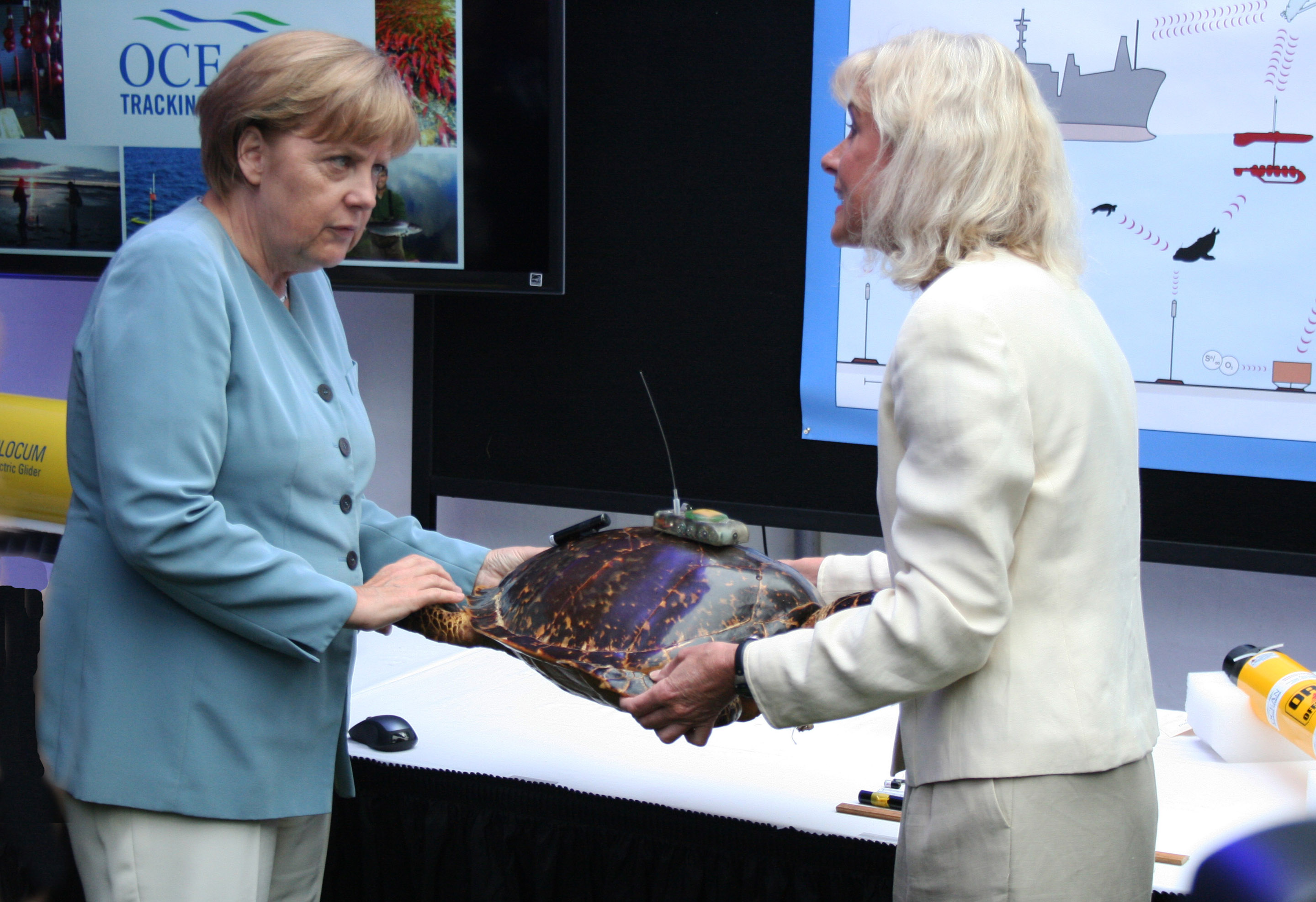I recently ran across the following article: “Evaluation of the rate constant for the SN2 reaction fluoromethane + hydride .fwdarw. methane + fluoride in the gas phase.” Sound familiar? Perhaps slightly arcane for the general reader? The lead author? Angela Merkel — yes, that Angela Merkel. Merkel is not only the Chancellor of Germany, the de facto leader of the European Union and according to the Daily Telegraph (London), “the most powerful woman in the world,” she is also a whip-smart Ph.D. quantum chemist with a sheaf of scientific publications under her professional belt.
The connection between the two — academic chops and political success — is not simply coincidental. That’s because Merkel is more than clever — she’s intelligent and smart. Quantum chemistry is no discipline for intellectual slackers. Applying quantum mechanics to theoretical and experimental chemistry is a highly demanding discipline involving immense creativity, an intuitive grasp of complex and abstract ideas, great computational abilities, and the talent to unravel, understand, and creatively tinker with highly complicated physio-chemical and theoretical systems. In other words, it’s a superb basis for developing an imaginative approach to politics and renewable energy policy.
Renewable energy: German benchmarks
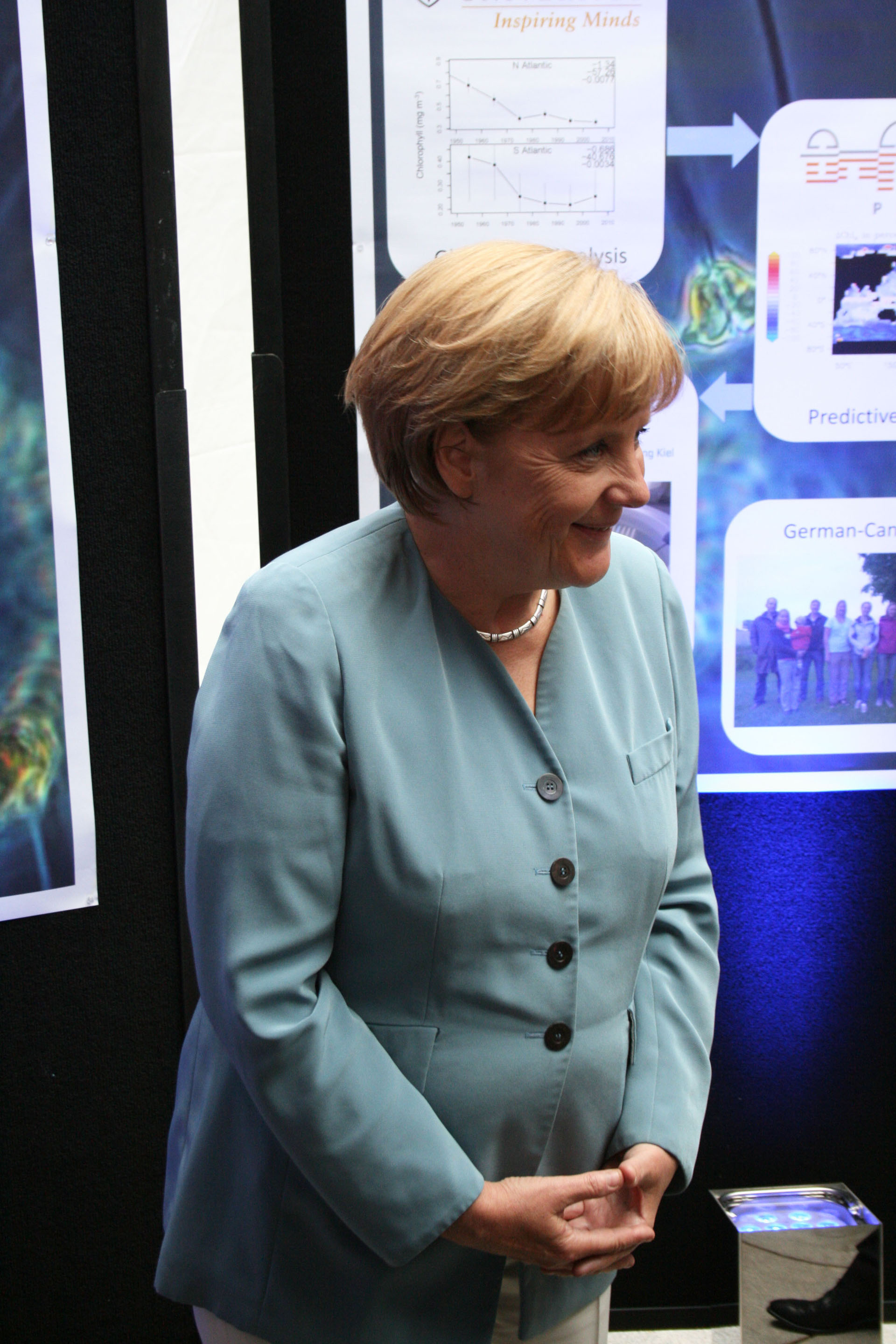 One of the defining features of Merkel’s 22-year political career — from 1994 as Minister for the Environment, Nature Conservation, and Nuclear Safety, then in 1998 as the secretary-general of the Christian Democratic Union (CDU), and since 2005 as German Chancellor — has been the dramatic development of renewable energy. Germany has been called the “world’s first major renewable energy economy” and the German Renewable Energy Act (EEG in German), which has provided the political springboard for this development, was called “one of the greatest paradigm shifts since the start of the industrial revolution” by the Green Energy Act Alliance.
One of the defining features of Merkel’s 22-year political career — from 1994 as Minister for the Environment, Nature Conservation, and Nuclear Safety, then in 1998 as the secretary-general of the Christian Democratic Union (CDU), and since 2005 as German Chancellor — has been the dramatic development of renewable energy. Germany has been called the “world’s first major renewable energy economy” and the German Renewable Energy Act (EEG in German), which has provided the political springboard for this development, was called “one of the greatest paradigm shifts since the start of the industrial revolution” by the Green Energy Act Alliance.
There are three core principles:
1. Guaranteed long-term (20 years) feed-in tariffs (specific to each energy source) for the production of renewable energy, along with a connection requirement. Distribution companies must provide grid connectivity and purchase such renewable power (whether generated by municipalities, coops, small or medium-sized enterprises, or indeed, individual land owners), and must preferentially (compared to electricity produced by conventional non-renewable sources) feed it into the transmission and distribution grid.
2. There is no public cost or subsidy. The feed-in tariffs are paid by electricity distributors to electricity producers and recouped from the rates they charge to consumers. Thus consumers who are most thrifty and conservation-minded pay less than their energy profligate peers — and this applies both to individuals as well as enterprises. Moreover, in contrast to fossil fuels, whose use produces environmental, climatic, and human health impacts, the production of electricity from renewable sources has far fewer externalized costs, thus saving the state in pollution and health remediation costs.
3. Innovation and efficiency are promoted by a periodic decrease of feed-in tariffs for new developments (i.e., a degression of 1 per cent per year).
These measure have produced astonishing economic, technological, and environmental results. The figure below shows the generation of renewable electricity (in Gigawatt hours, GWh) between 1990 and 2011. Hydro-electric generation has remained relatively constant but all other sectors of renewable energy have show dramatic growth since the EEG was introduced in 2000 [Note: production of geothermal energy really only began in 2004 and stayed minuscule until 2008. It has increased to 18.8 GWh, but this is still a tiny sliver compared to other sources and so it doesn’t show on the figure below.]
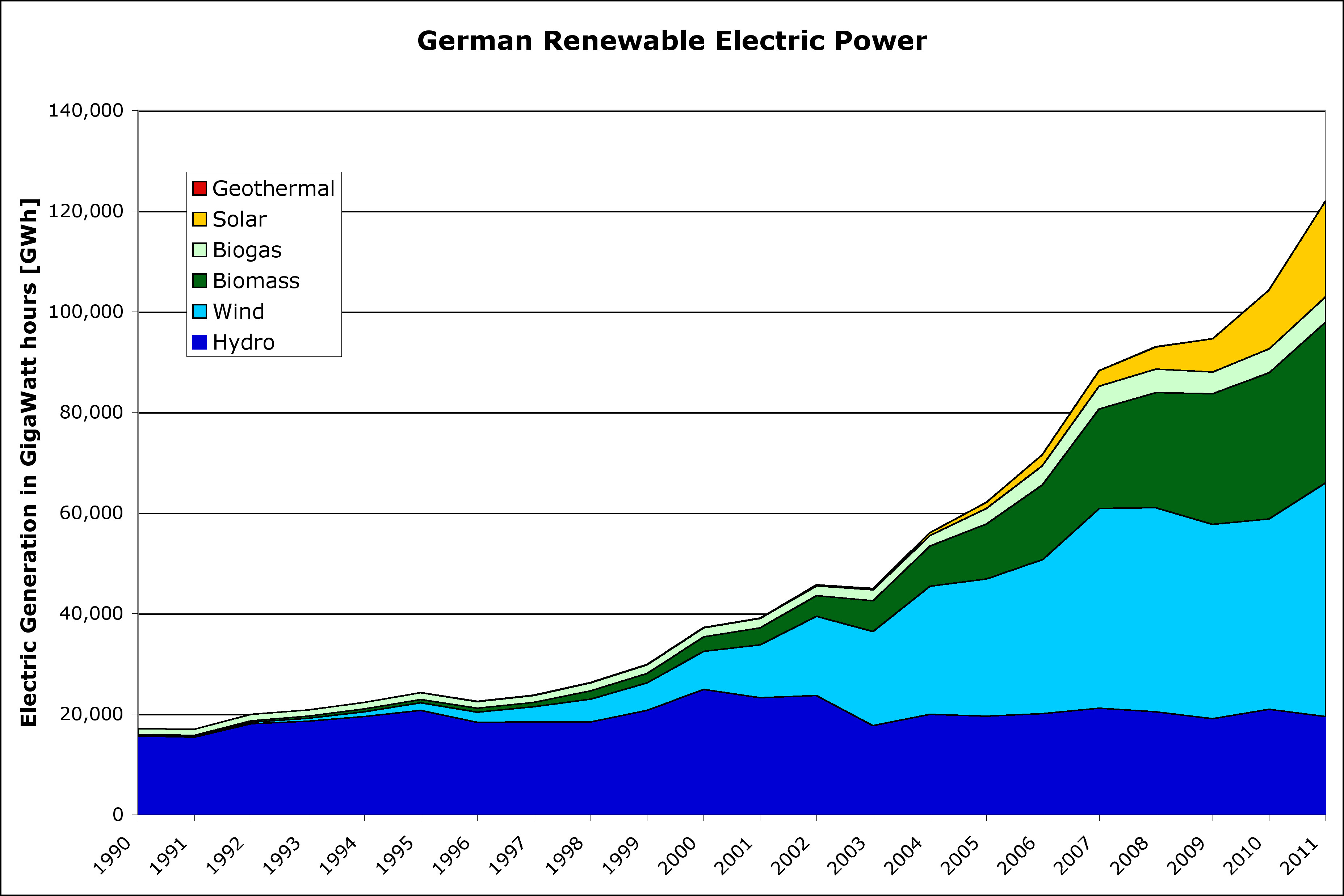
To place this in an overall electricity context, the figure below shows the proportion of renewable and non-renewable electric generation capacity [in Megawatts] over this same time period. In 1990 the renewable fraction was only 3.2 per cent, which increased only to 5.7 per cent by the end of the decade. Since then, however, the renewable fraction has almost quintupled to 25.2 per cent — a dramatic rate of growth. Moreover, Germany has set ambitious goals for the future, namely to produce 35 per cent of its electricity from renewable energy by 2020, and 80 per cent by 2050. This is a phenomenal objective, particularly given that Germany committed to closing all of its nuclear reactors in 2011 following the Fukashima nuclear disaster. Eight have already been mothballed and nine more will be closed down by 2022 (Germany once generated 150,000 GWh of electricity from nuclear sources).
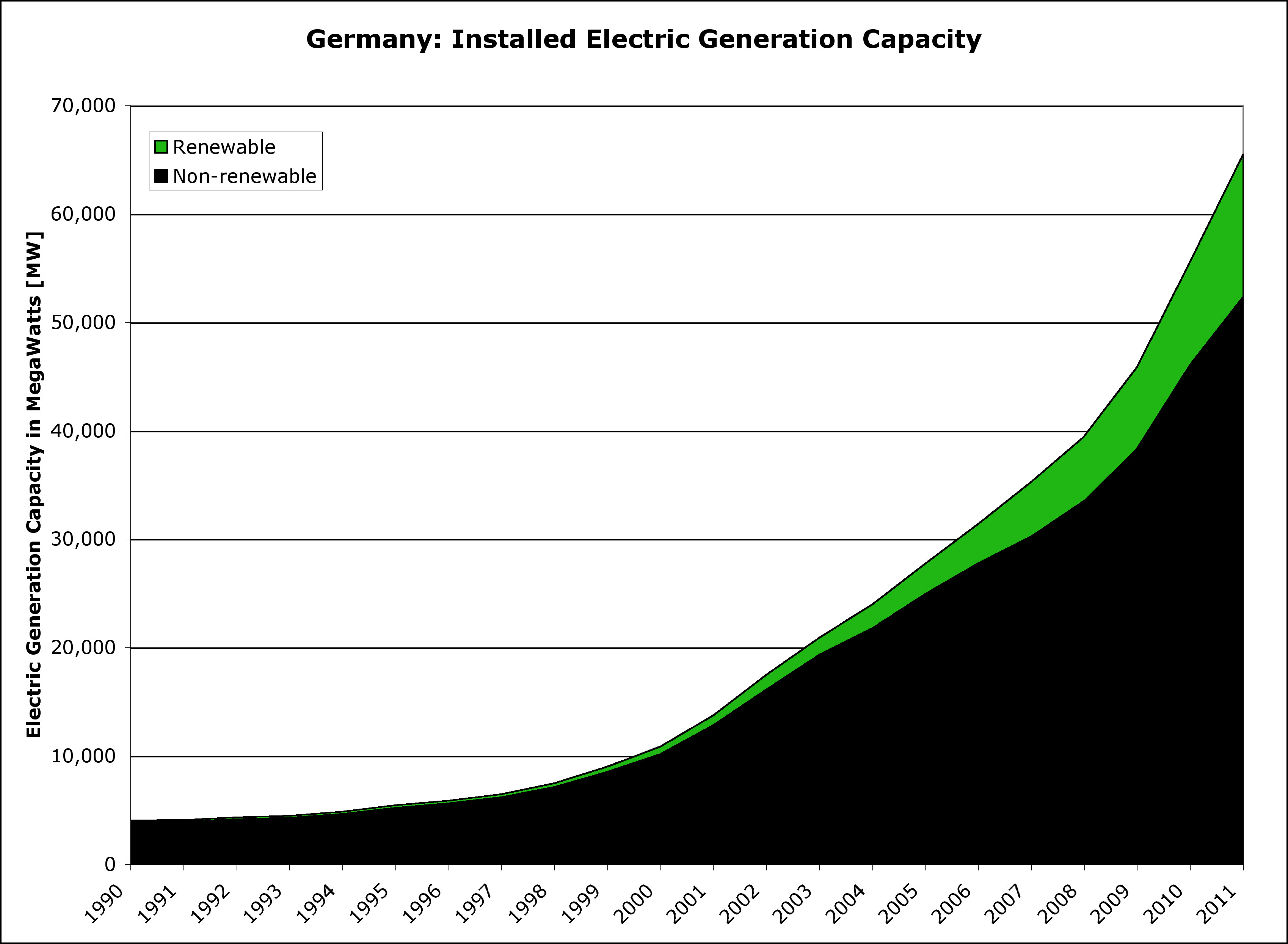
Germany: Environmental success
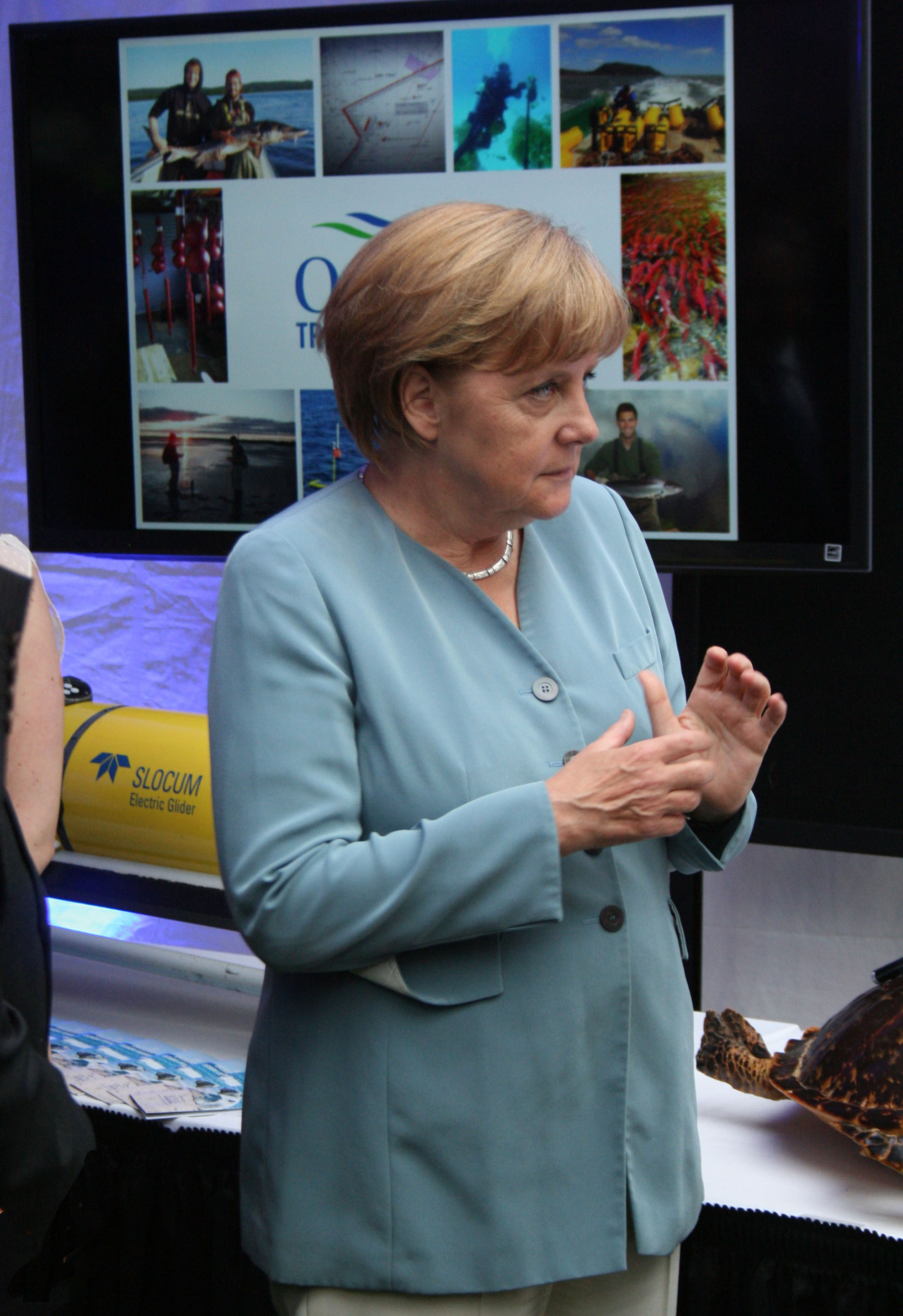 Concurrent with this development of renewable energy, Germany is also making significant strides in energy efficiency, the goal being to cut national electrical consumption to 50 per cent below 2008 levels by 2050.
Concurrent with this development of renewable energy, Germany is also making significant strides in energy efficiency, the goal being to cut national electrical consumption to 50 per cent below 2008 levels by 2050.
Not only has there been a dramatic increase in the development of all these renewable energy sources and in energy conservation, these changes have manifested themselves on the environmental front. In 1990 (the base year for the Kyoto protocol) Germany emitted 1,246.1 Megatonnes (Mt) of carbon dioxide equivalent greenhouse gases (GHG). By 2000 this had decreased to 1,039 Mt and by 2011 it was down to 916.7 Mt, a 26.5 per cent reduction. Under the Kyoto Protocol, Germany was obliged to decrease its GHG emissions 21 per cent from 1990 levels by 2012, an objective that it met in 2008, four years ahead of schedule. On the employment front, some 340,000 people are employed in the renewable energy sector in Germany, 0.86 per cent of the workforce.
Merkel’s position on the German approach to renewable energy is that:
“The German government has chosen the socio-ecological market economy as the framework for shaping production and consumption in keeping with sustainable development, while at the same time encouraging innovation in industry and society. The key is to sever the traditional link between economic growth and the consumption of resources, which increasingly threatens the natural basis for life and the preservation of natural and landscape diversity.
“Technical and scientific innovations provide excellent prospects for environmental protection. It is vital that we use our growing knowledge and capabilities responsibly, and that we use them in the interest of environmentally appropriate development. Science must play an important role in the pursuit of sustainable development.”
The Canadian record
It is worth comparing these benchmarks to Canadian ones.
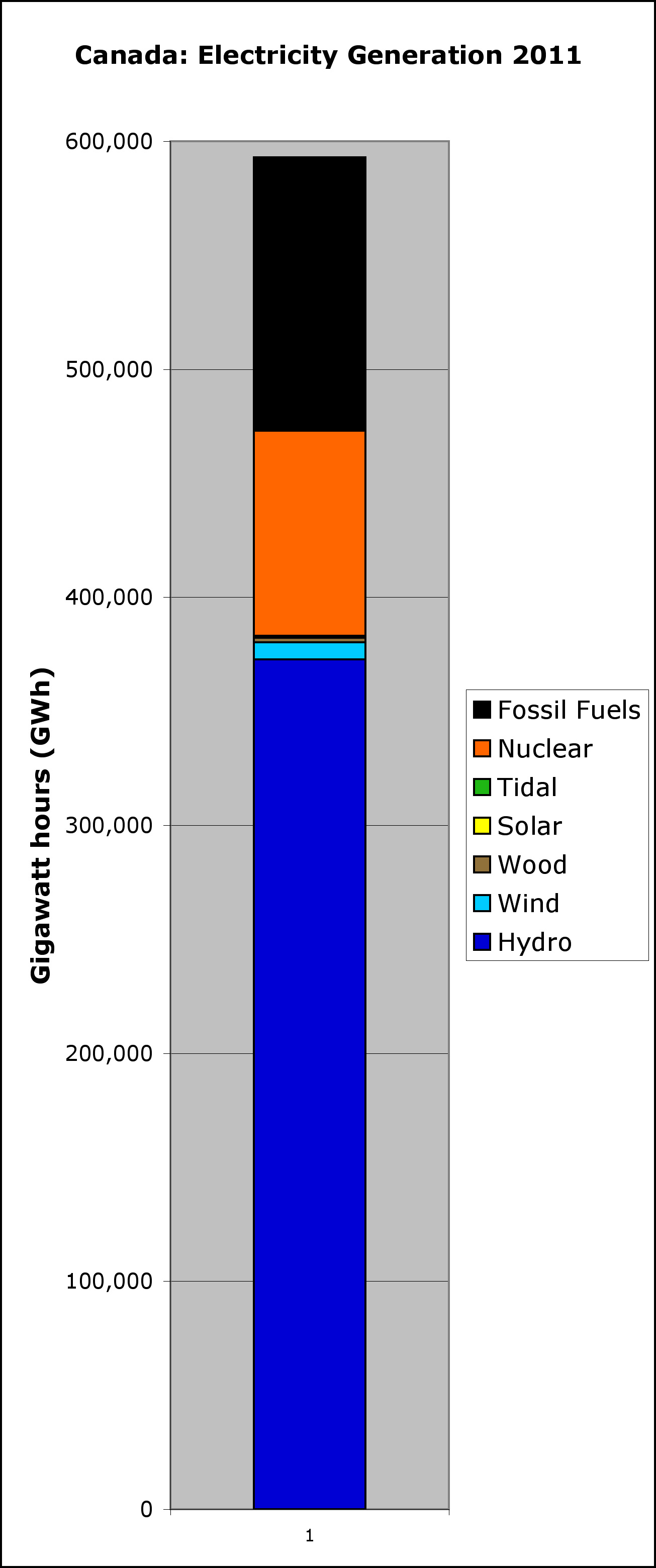 In terms of renewable energy, Canada has an enormous advantage over Germany as a result of our extensive hydro resources, which in 2011 generated 372,780 GWh, almost 63 per cent of Canadian electricity. Wind generated 7,560 GWh, 1.3 per cent , while other renewable energy sources (tidal, wood, solar, and geothermal) comprise less than 0.5 per cent. While 64.6 per cent of Canadian electricity is generated from renewable sources, 35.4 per cent still comes from non-renewable sources, chiefly nuclear (15.2 per cent) and fossil fuels (20.2 per cent) including coal, coke, petroleum, light and heavy oil, diesel, and natural gas.
In terms of renewable energy, Canada has an enormous advantage over Germany as a result of our extensive hydro resources, which in 2011 generated 372,780 GWh, almost 63 per cent of Canadian electricity. Wind generated 7,560 GWh, 1.3 per cent , while other renewable energy sources (tidal, wood, solar, and geothermal) comprise less than 0.5 per cent. While 64.6 per cent of Canadian electricity is generated from renewable sources, 35.4 per cent still comes from non-renewable sources, chiefly nuclear (15.2 per cent) and fossil fuels (20.2 per cent) including coal, coke, petroleum, light and heavy oil, diesel, and natural gas.
Thus, although in absolute proportions Canada is much further ahead of Germany (64.6 per cent versus 25.2 per cent of electricity from renewable sources), the reality is Canada is making almost no progress. In 1990 Canada generated 61.5 percent of electricity from renewable sources (almost all from hydro), so over 21 years we have added only 3.1 per cent to our renewable energy output share while over the same time period Germany added 22 per cent to its, the lion’s share in the last decade.
Furthermore, while Germany committed to reducing its GHG emissions 21 per cent below 1990 levels by 2012 under the Kyoto Protocols (a goal which it achieved in 2008), by 2010 it had actually decreased them by 25.6 per cent. Canada, on the other hand, committed to reducing its GHG emissions by 6 per cent from 1990 levels (a quarter of Germany’s proportionate decrease) by 2012. How has Canada fared? In 2010 our emissions were actually 17.5 per cent above 1990 levels. While Germany had to do almost four times the heavy lifting of Canada — and it succeeded — Canada failed to act and its GHG emissions ballooned. Then the Harper Conservatives pulled the plug on the Kyoto Protocol altogether as part of the myriad provisions of Bill C-38, the infamous omnibus budget bill of June 2012.
In terms of employment, numbers for the renewable energy sector in Canada are difficult to find, however a report by the Canadian Centre for Policy Alternatives, Climate Change and the Canadian Energy Sector by John Calvert and Marjorie Griffin Cohen, estimates that every 10 Megawatts of installed capacity results in approximately 6 jobs. On that basis the 168,642 Megawatts of hydro, wind, solar, and tidal generation capacity in Canada should employ approximately 101,200 people, 0.63 per cent of the workforce, about 27 per cent less per capita than Germany.
The science of climate change: Merkel assembles, Harper dissembles
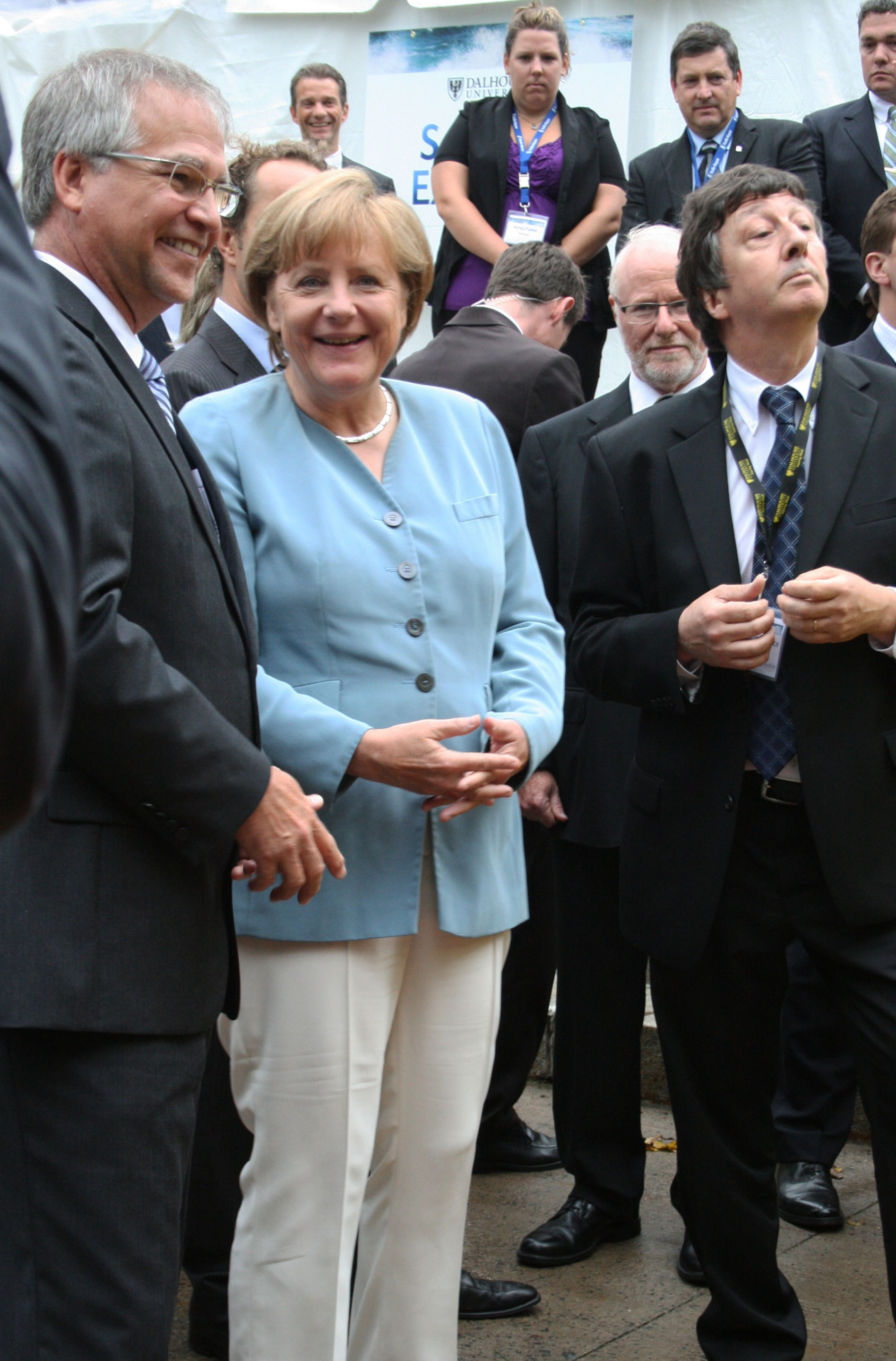 Angela Merkel visited Halifax en route back to Berlin following meetings in Ottawa with Stephen Harper to discuss economic issues. The formal occasion in Halifax was the signing of a Memorandum of Understanding (MOU) between the Halifax Marine Research Institute (HMRI) based at Dalhousie University, and the Geomar Helmholtz Centre for Ocean Research in Kiel, Germany to undertake a joint project entitled Change, Risk and Resources in the Ocean: A Transatlantic and Arctic Approach. While the scientific details of this collaborative project are still being worked out, in Halifax Merkel met with a number of prominent researchers who will be involved in the project.
Angela Merkel visited Halifax en route back to Berlin following meetings in Ottawa with Stephen Harper to discuss economic issues. The formal occasion in Halifax was the signing of a Memorandum of Understanding (MOU) between the Halifax Marine Research Institute (HMRI) based at Dalhousie University, and the Geomar Helmholtz Centre for Ocean Research in Kiel, Germany to undertake a joint project entitled Change, Risk and Resources in the Ocean: A Transatlantic and Arctic Approach. While the scientific details of this collaborative project are still being worked out, in Halifax Merkel met with a number of prominent researchers who will be involved in the project.
They included Marcel Babin who is developing new technologies to monitor climate change and human impact in the Arctic; John Cullen a researcher on ballast water and invasive organisms; Katja Fennel who conducts research on ocean warming, sea level rise, and ocean acidification; Louis Fortier who monitors oceanic and climate change in the Arctic; Sara Iverson who investigates the interactions of marine animals (fish, whales, seals, turtles, and seabirds) related to oceanography and climate change; Julie Laroche who studies the physiological ecology of marine phytoplankton; Keith Thompson an investigator of extreme marine events and climate change; Douglas Wallace who has developed new technologies to detect oceanic changes associated with climate change; and Boris Worm who investigates the causes and consequences of changes in marine biodiversity.
The common denominator of the work of all these scientists is oceanic change related to climate change, invasive species, and human activities — a clear indication of the focus of this new research initiative. It’s worth contrasting this with just a few of the recent legislative measures of the Harper Conservatives (i.e., those contained in Bill C-38): the Environmental Assessment Act was repealed; many provisions of the Environmental Assessment Agency undercut; the Kyoto Protocol Implementation Act was killed; the Fisheries Act gutted; the Navigable Waters Protection Act weakened, the Species at Risk Act compromised, the National Round Table on the Environment and Economy was liquidated, Environment Canada’s Environmental Effects Monitoring Program scaled back, the Municipal Water and Wastewater Survey cut, and the Experimental Lakes Area is being shut down. Since the beginning of April 1,047 employees of Natural Resources Canada, Environment Canada, and the Department of Fisheries and Oceans have been laid off (and over 700 Environment Canada positions were cut in 2011).
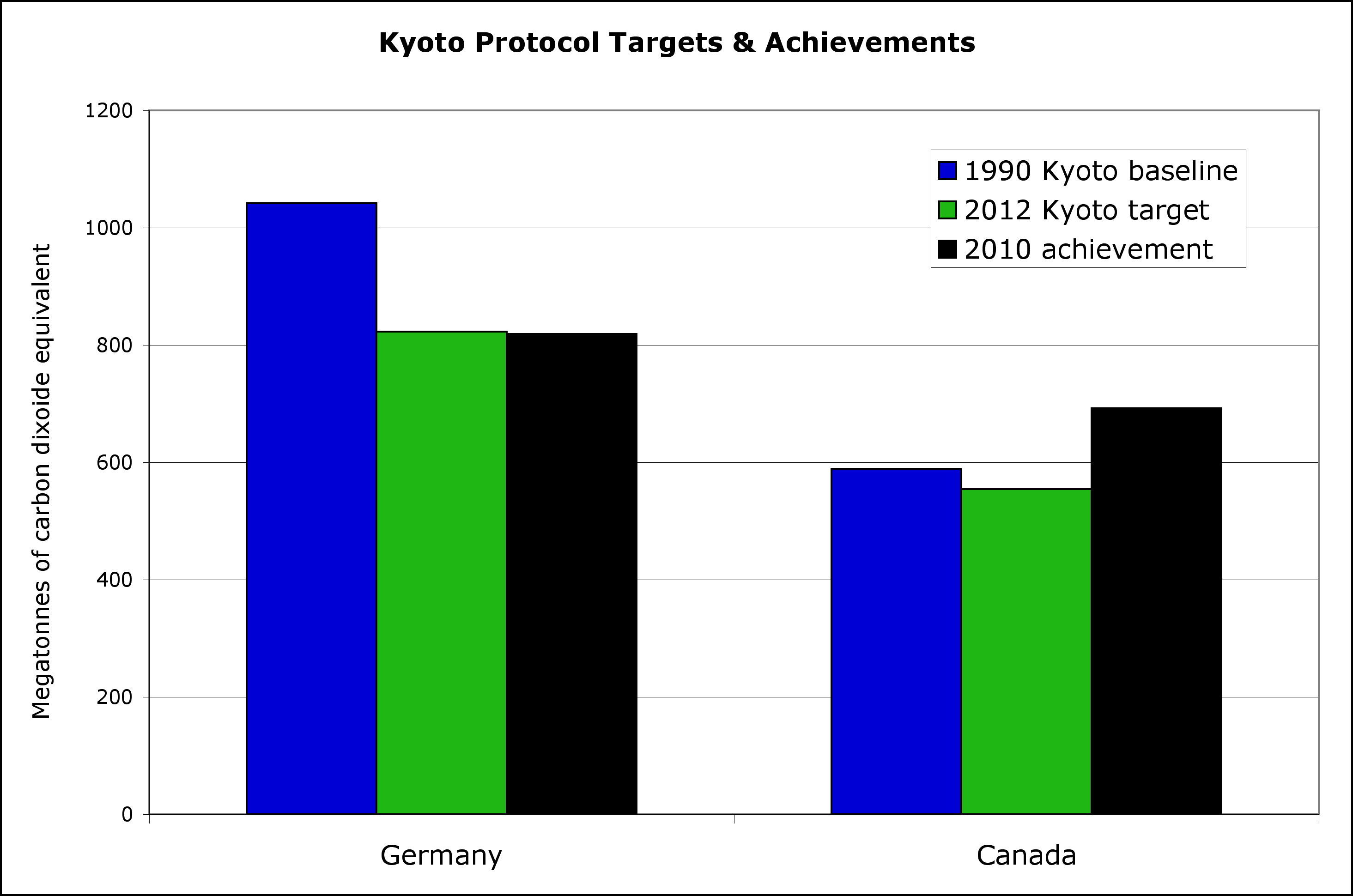
On July 10, 2012, 2,900 scientists gathered on Parliament Hill to protest the concerted attacks of the Harper Government on science in the Death of Evidence rally. The rallying cry of the protest was the slogan “No Science, No Evidence, No Truth, No Democracy.” An editorial by Nature, one of the two most prestigious scientific publications in the world, concluded by saying:
“It is hard to believe that finance is the true reason for these closures. Critics say that the government is targeting research into the natural environment because it does not like the results being produced. If the Harper government has valid strategic reasons to undermine vital sectors of Canadian science, then it should say so. If not, it should realize, and fast, that there is a difference between environmentalism and environmental science — and that the latter is an essential component of a national science programme, regardless of politics.”
Beyond the cutbacks are other egregious policies of the Harper Conservatives such as the systematic muzzling of Canadian scientists and the assignment of Stasi-like political “minders” to keep tabs on Canadian scientists at an international polar year conference in Montreal in 2012. Contrast this with the German Chancellor’s science policy:
“The German government recognizes that our future lies in a knowledge-based society founded on freedom and responsibility. This is what will enable Germany to rise to the challenges of today’s world, be they national or global, or economic, social, or ecological in nature. That is why the promotion of science, research, and innovation is one of my top priorities.
“Our benchmarks are excellence, internationality, and freedom. We also plan to give science and research a freer hand. The task of government is to create conditions in which they can flourish and to provide the right kind of stimulus. That means that our universities and research institutions must be given more independence. They need greater freedom to choose their students and staff, develop their own profiles, cooperate with industry, and spend their funds as they see fit.”
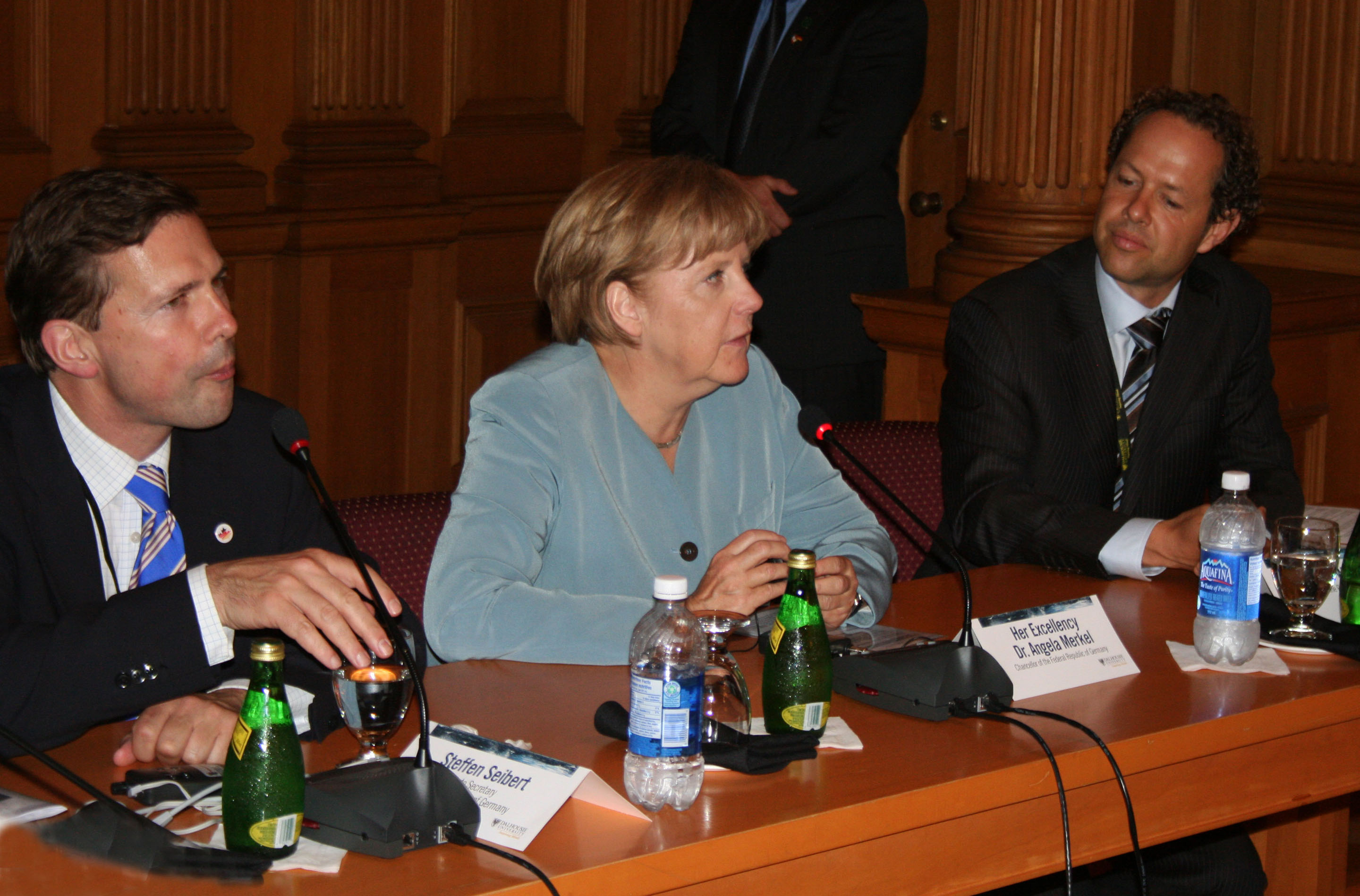 Merkel is a fiscal conservatives and sees eye to eye with Stephen Harper on issues such as the Comprehensive Economic and Trade Agreement (CETA), the contentious treaty that The Council of Canadians believes is “a way to further deregulate and privatize the Canadian economy while increasing corporate power and undermining our democratic options for the future.” For good reasons organizations such as the Council and the Canadian Union of Public Employees (CUPE) fear this potentially draconian trade pact. “Once I go back to Germany I will see to it that these negotiations come to a speedy conclusion,” Merkel promised after her meetings with Harper in Ottawa.
Merkel is a fiscal conservatives and sees eye to eye with Stephen Harper on issues such as the Comprehensive Economic and Trade Agreement (CETA), the contentious treaty that The Council of Canadians believes is “a way to further deregulate and privatize the Canadian economy while increasing corporate power and undermining our democratic options for the future.” For good reasons organizations such as the Council and the Canadian Union of Public Employees (CUPE) fear this potentially draconian trade pact. “Once I go back to Germany I will see to it that these negotiations come to a speedy conclusion,” Merkel promised after her meetings with Harper in Ottawa.
Nevertheless, Merkel’s commitment to renewable energy and combating climate change, and her belief in the importance of knowledge, fact, and science, have unquestionably made an significant contribution to the extraordinary progress that Germany has made in these spheres. It’s unfortunate that the Harper Government has erected a “Berlin Wall” around the PMO to exclude science, fact, knowledge, reason, and logic, and like the East German government of old, permits nothing not sanctioned by the Communist — or rather the Conservative Party — to penetrate its ideological fastness.
Christopher Majka is an ecologist, environmentalist, policy analyst, and writer. He is the director of Natural History Resources and Democracy: Vox Populi.

